Shōgun’s Costumes Are an Epic Ode to Japan’s Sengoku Period
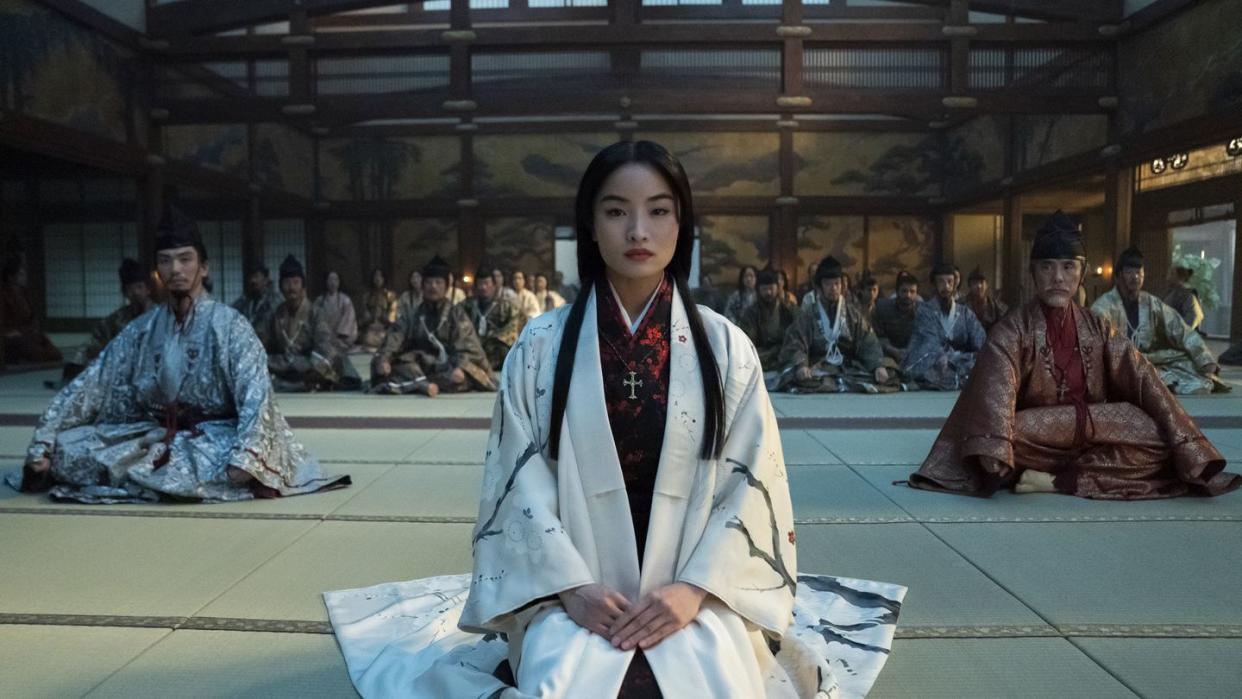
Costume designers for period pieces are tasked with re-creating specific moments in time, but they are also responsible for visually representing the narrative journeys of a story’s characters. That’s a responsibility that Carlos Rosario, costume designer for FX and Hulu’s Shōgun, didn’t take lightly.
“I think you have to be very specific about [the fact that] you’re telling a story,” he tells Harper’s Bazaar. “This is not about making myself happy—it’s about delivering a character to the world. Those costumes really define who these people are.”
The new limited series, whose first two episodes premiered last Tuesday, is adapted from the 1975 James Clavell novel of the same name and follows in the footsteps of an Emmy-winning 1980 miniseries. Loosely based on a real-life story, Shōgun chronicles the epic political machinations of Japan’s feudal Sengoku period in the early 1600s. When English pilot navigator John Blackthorne (Cosmo Jarvis) and his crew get marooned off the coast of Japan, Lord Yoshii Toranaga (Hiroyuki Sanada) seizes the opportunity to use Blackthorne to drive a wedge between his rivals, who themselves are divided due to the influence of Jesuit missionaries and Portuguese traders. Along with Lady Mariko (Anna Sawai), a Christian noblewoman with a mysterious past who acts as Blackthorne’s translator, Toranaga navigates a simmering political landscape as the country edges toward civil war.
“This is a very specifically Japanese project, but it’s not just for the Japanese audience,” Rosario adds. “You want to bring it into the world so everybody—the modern audience—can actually understand them.”
Ahead, Bazaar chats with Rosario about his design approach to the historical period drama, from studying paintings from the Sengoku period to balancing the need for authenticity against the desire to be creative onscreen.
For a project this massive, how do you even begin to tackle the design process?
One of the things that kept coming back in my first interviews with [showrunner Justin Marks] was how much he wanted this show to be as accurate and as authentic as possible. That really was the first intention in designing this show. To do that, we had to first understand the paintings of the Sengoku period, because, at the end of the day, that is the main source of research. There were no photographs or anything else. I was in touch with an incredible historian that lives in Japan, Frederik Cryns, and he was sort of my go-to person who helped me dissect and understand those paintings, the patterns, the colors—and also understand, within those paintings, the positions of the characters, the different ranks and all that. Once that territory was very clear for me, then it was really about understanding the characters and understanding their emotional journey within the 10 episodes.
Working with very specific colors for every character helped me conceptualize everything in a way that would [make it] easy for the audience to understand the storyline. That really helped me limit my choices, in terms of what I could design for the characters. So: Toranaga in the browns and the coppers and the golds; and then you have Ishido [Kazunari, played by Takehiro Hira] in the grays; and Mariko has her own specific color palette.
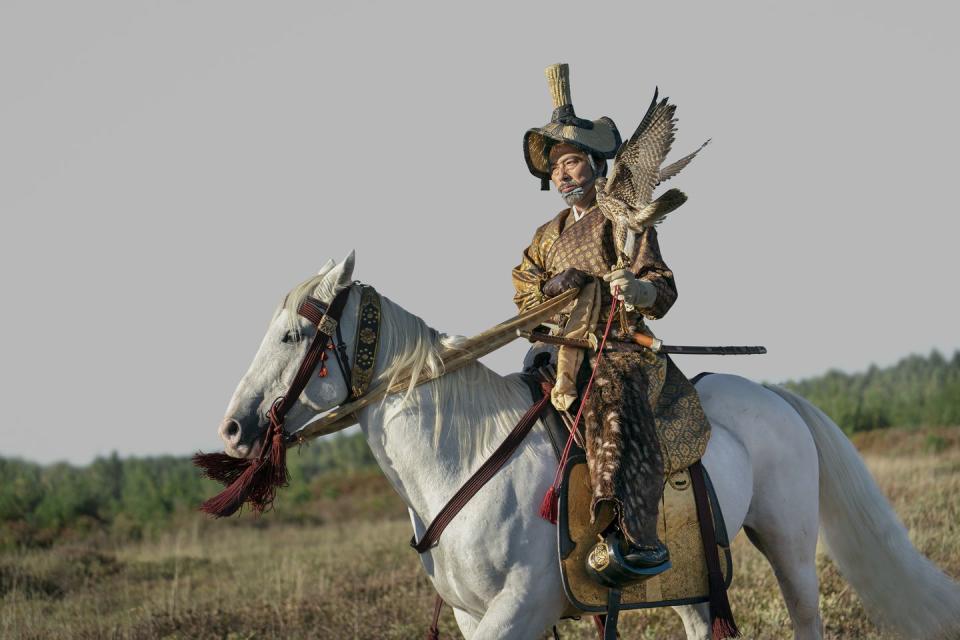
Can you talk more about how your approach changes depending on which character you’re dressing?
When you design a character, I think you need to start with the bigger perspective. So what rank do they belong to? What are the circumstances they’re facing? Which location are they in? Then you need to obviously understand the period as much as you can, and understand the language of the clothing of that period, because everything means something. Every pattern says something. Once you understand all those big concepts, then you can actually introduce the psychological and emotional aspect of each character.
For example, Mariko is a great concept. Of all the characters, I think she was probably the most stressful to design, because of how beautifully she was designed in the ’80s [series]. But this was a different version, so I wanted to have a new take on her. I started with the fact that [when audiences meet her] for the first time, she was very icy— obviously because of what happened to her and her family being dishonored, and her wanting to commit seppuku every year, and yet she was never allowed to do that. She lived life in a very spiritless way: cold, without a heart, like a ghost. I wanted to represent that in her costumes. Since we shot in winter, the clothes that she wears in the beginning of the show all represent the lifeless. Anything that is lifeless: snow, branches covered in snow, grass covered in snow. It’s a way to show that the first time we meet her, here’s a woman without a path, without life, without purpose, without intention. And that was the most healthy way to start designing her character, because it gave me a lot of room to play with later on. She starts with that season, winter, and slowly you start seeing the camellias blooming into her costume as she’s given this job and purpose of being Blackthorne’s translator. From that moment on, here’s a female character that starts empowering herself and finding her voice. As she grows into herself, I introduce more patterns and colors.
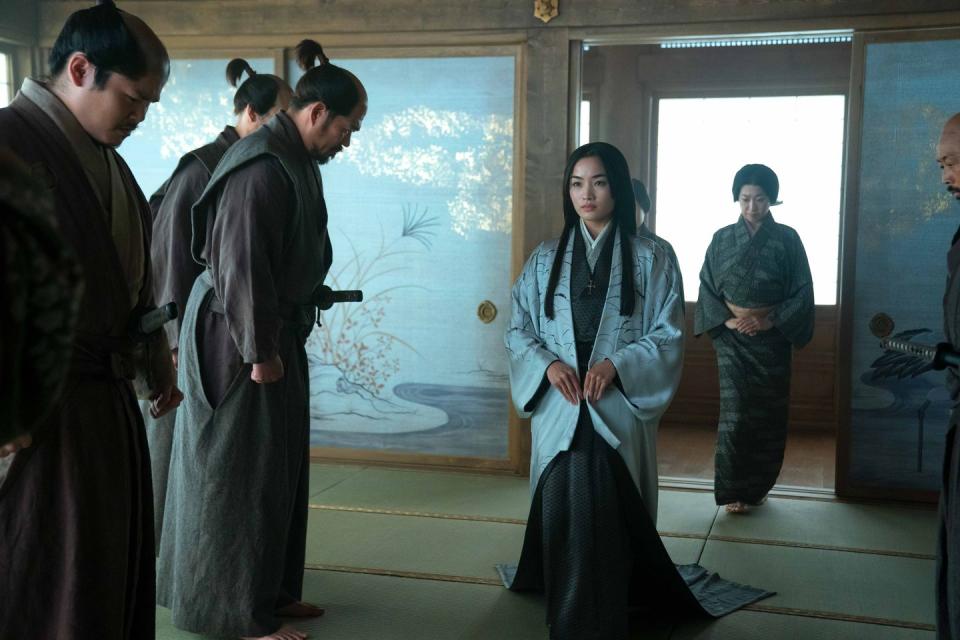
I think the effect of well-done costuming is the kind that occurs without audiences even realizing it. Costumes subliminally convey certain feelings about the story that we might not have otherwise cued into.
Absolutely. Especially when you have so many different characters, I think you have to be very specific about [the fact that] you’re telling a story. This is not about making myself happy—it’s about delivering a character to the world. Those costumes really define who these people are. That’s my job. Also, you want those characters to feel approachable to the audience. This is a very specifically Japanese project, but it’s not just for the Japanese audience. You want to bring it into the world so everybody—the modern audience—can actually understand them.
Shōgun also has a really rich history, with the 1975 novel and 1980 miniseries. Did you read the book or watch the old series as part of your design process?
No, I didn’t read the novel. My intention in the beginning was to read the novel, and then I remembered a few years ago, [when] I worked on The Girl in the Spider’s Web… I started reading the book and I started comparing the book with a script. And it just started to become this kind of mental torture of all these references. It made my sort of intuitive, almost psychological and spiritual process to understand the characters more complicated. So for me, it was better to just start working from a blank, wide canvas. Since I’m a very intuitive designer, I like to be open to what is around me. I like to absorb, I like to understand the crew that I have, and I like to feel the characters and the actors. It’s probably the healthiest way for me to design something—to not have any kind of mental references attached to my creative process.
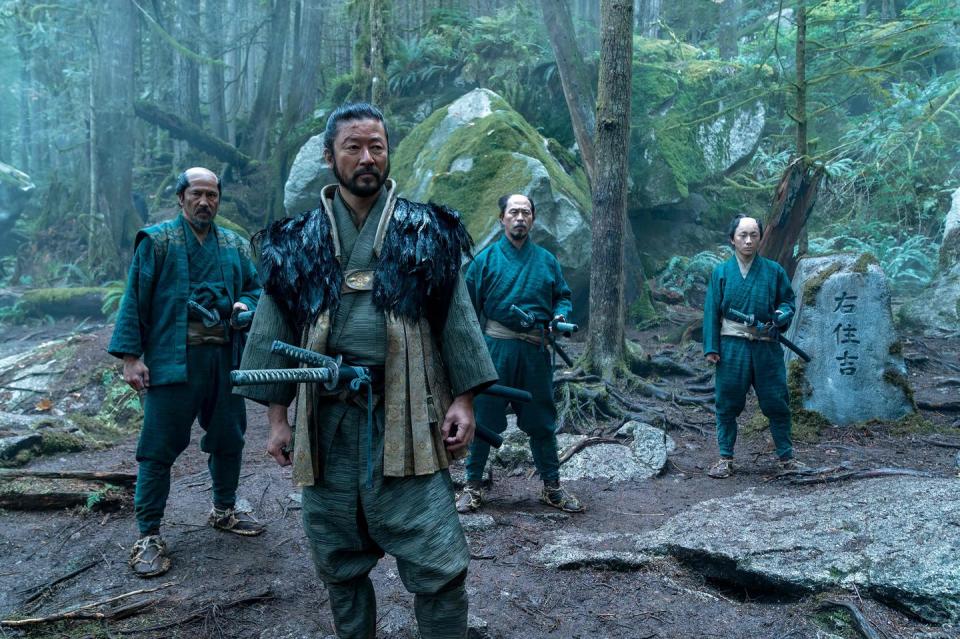
In terms of the ’80s miniseries, I did watch a little bit, but it was mostly about [creating] all these boards with all the looks that every single character was wearing for every episode. But I never really took that as a reference, because the ’80s are the ’80s. It’s a very specific aesthetic, and I knew our show was going to be very different from that. As you see, it’s completely the opposite. [Watching the ’80s series] was mostly for every time I had a question like, “Well, what type of piece would this character wear in this type of circumstance and in this type of location?” Was it a noshi? Was it hakama pants? That gave me a little bit of guidance.
On Instagram, you talked a bit about developing hundreds of illustrations for Shōgun. How do you think the final costumes we saw onscreen might have evolved from those original sketches?
I can tell you that for sure. The costumes that we executed are exactly like the drawings. Exactly. I knew exactly what I wanted and I knew exactly what the character needed—that’s why we did hundreds of illustrations. Within that design, I worked with my illustrator on different options and different colors, and then at the end I just narrowed down everything to one or two options that I presented to our showrunner, and we went from there. But at the end of the day, I wanted to be as specific as possible about giving the most detailed and specific drawings to my workroom and to the people that helped me to find the fabrics and threads and things like that—so everybody’s on the same page. When you have so many thousands of costumes to design, and you have to do that in such a fast rhythm and you have such a big crew, you need to be very specific. So if I would show you the drawings right now and you would see the final costumes onscreen, you’ll be like, “It’s exactly the same thing.”
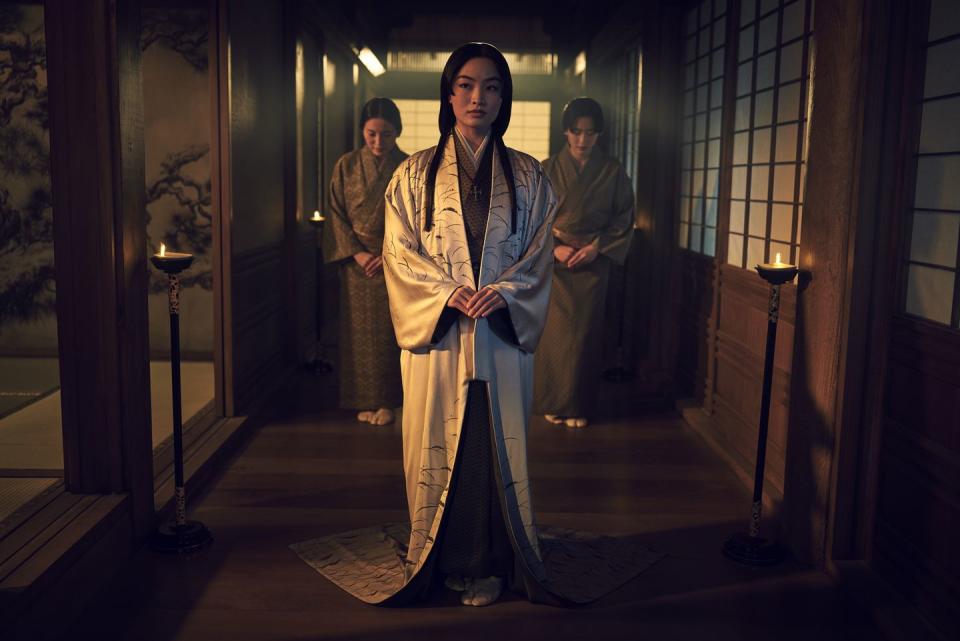
That’s incredible, especially with the volume of costumes produced.
Sometimes on movies you have a little bit of room to play with different options, and you bring several racks of options to the fitting room. [For Shōgun,] there was no time for that. Pretty much everything that you see onscreen was my first idea. It was my first option, and then we had to make it, do the fitting, and put it onscreen—then back to the next costume. That shows you … the fast rhythm in which we had to work and how, creatively, I needed to be very decisive about what we needed to design.
In terms of the actual construction process, I’m really curious to know how you went about handling all of that since, as you said, there are thousands of costumes.
First of all, I was working with the most incredible workroom I’ve ever worked with. And I don’t think that you [often] get to have a workroom like that, with such talented cutter-fitters. Each one of them had two or three seamstresses working for them, and then each one of them had their specific characters that they worked on from the beginning to the end. So everything was very organized, and it was a great way for these cutter-fitters to build a relationship with the actors, their bodies, and their measurements. After the first or the second episode, these cutter-fitters could just do the patterns without paper.
In order to make sure that we understood the Japanese construction from the start, I rented Japanese pieces, like Japanese hakama and Japanese kosode, so I could see how they were built by Japanese cutter-fitters. The kataginus, specifically, are very sharp and you have subtle changes within this very sharp shape. So we brought them, we studied them, and then, with our fabrics, we made our costumes. I was trying to come from a respectful perspective of understanding how the Japanese really built their costumes.
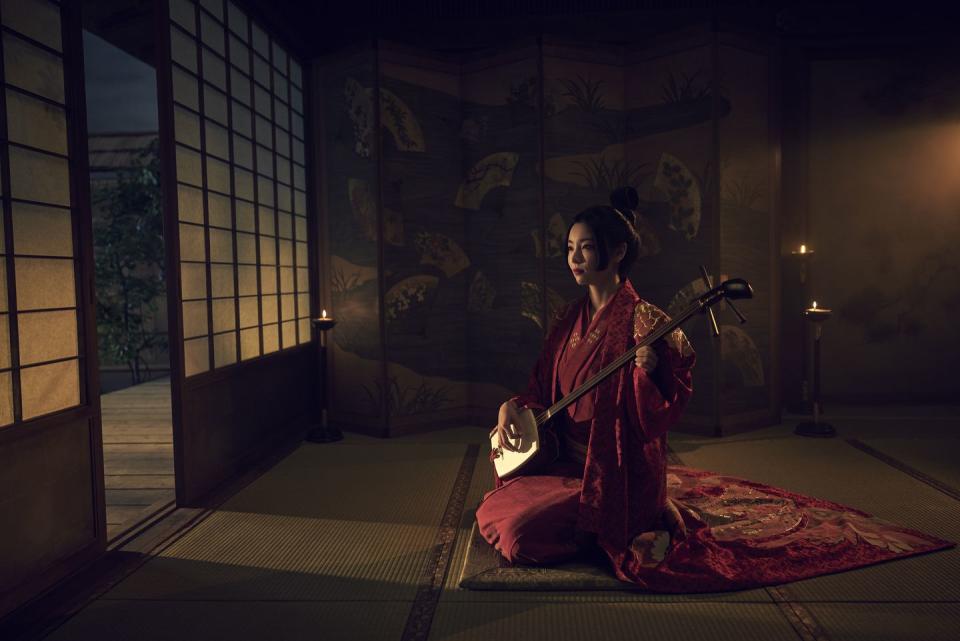
Did you work with any historical or cultural consultants on set? What was that relationship like?
Like I said before, I spoke with the incredible historian Frederik Cryns, who's an expert in the Sengoku period. He’s definitely a master. He’s so knowledgeable about everything. He was my go-to person for the first few months, but after a while, we had bibles of research and boards. I mean, the research that we did was astronomical. So after a few months, we were on our own. Maybe we would still contact him to ask him specific questions about, “Well, would this piece be appropriate for that particular scene?”
Apart from that, I mean obviously Hiroyuki Sanada was on set all the time. We had great actors that have been doing this for a long time, so they were also experts in the dressing aspect of these costumes. But we also had consultants, not specifically about costumes, but about the movements, the gestures, sword fighting, and things like that. We were surrounded by a Japanese community. I also had a lot of Japanese kimono experts that we found in Vancouver who came on board, and actually one of my assistants who lives in Vancouver is Japanese. His name is Kenichi Tanaka—I had three assistants, and he was one of them. It was really wonderful to be supported and surrounded by the Japanese community.
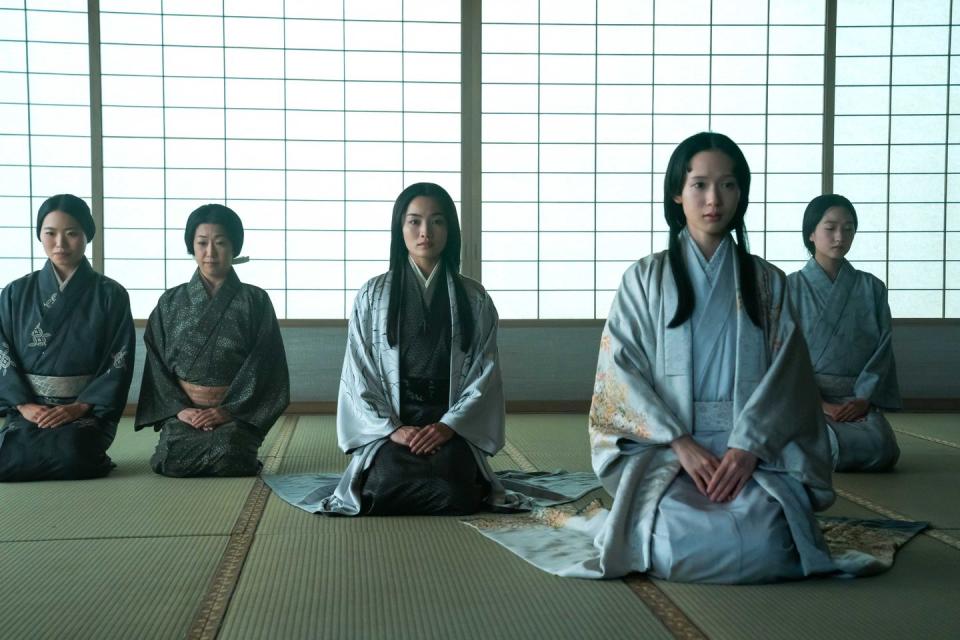
What trait do you value more when working on period pieces: historical accuracy or creative interpretation? Or is it a balance of both?
I think it is a balance of both. I remember Justin Marks telling me once that we really needed to know everything about this period to create a very strong container and understand where our boundaries are. But James Clavell took a lot of liberties in the novel, and the Sengoku period is also sort of a period of transition. So it really gave us the opportunity to play outside those boundaries. Also, as a costume designer, this is not about creating costumes for a documentary. You are creating the costumes for real characters and for an audience that needs to understand those characters.
You have a very eclectic background as a costume designer, but I also think Shōgun is so distinct from everything you’ve previously worked on. What attracted you to taking on this role?
I never thought that they would give me the job. I knew that this project was so unique and so big on its own and so special that I was like, “There is no way that they would approach me and they would trust me with this huge responsibility.” I worked really hard to understand this period and understand the characters. When I met with them, I did 125 boards—I edited them to 30, because I knew that 125 was a little bit too much to talk about—but I really fell in love with this period, and I really fell in love with the characters.
Out all the projects that I’ve worked on in my life, I feel like this one is my legacy. It’s a once-in-a-lifetime opportunity to be part of a project in which so much passion has been put into every single detail. This is the one that felt the most personal, and we were really supported by the studio in every single way, and that it was such a great experience working with all the producers, actors, head of department, showrunners, and such a talented crew in Vancouver. I think it really ended up being the best work I’ve done. I’m really proud of what we achieved.
This interview has been lightly edited and condensed for clarity.
You Might Also Like


